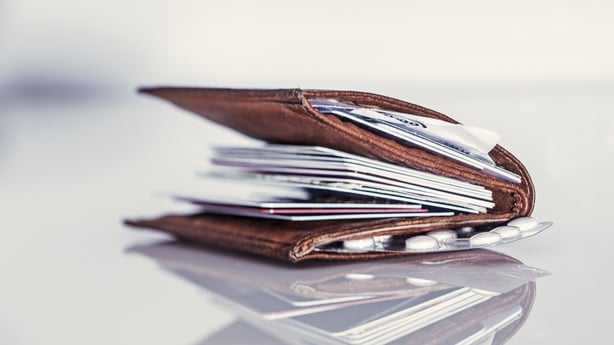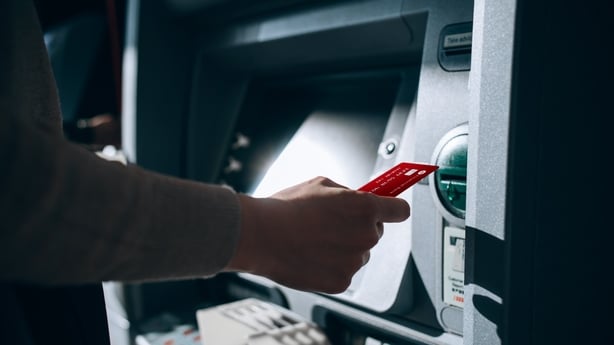With the US recently raising its debt limit, the dollar is under increasing pressure as a world currency, and could even collapse. Other currencies could follow.
It may therefore be important to take a look at the origins of money as a means of future purchasing power and bartering capabilities. Money evolved from a simple bartering mechanism to the hugely complicated structures we use in our everyday lives.
John Lowe of MoneyDoctors.ie gives a brief run through the origins through 20 information points.

1. Before money was made of bills and coins, these items were used as currency: conch shells, ivory, clay, live animals and grain. As long as it was divisible and scarce, it could be deemed "money".
2. The name money comes from Middle English: from Old French "moneie", from Latin "moneta" meaning "mint, money", originally a title of the goddess Juno, in whose temple in Rome money was minted.
3. The first banks were likely religious temples because the security was always tight.
4. The first records of loans, deposits, currency validation and exchange were recorded in the 18th Century BC in Babylon (Ancient Greece).
5. Pythius, a merchant banker from Asia Minor in the 5th century BC, was the first banker on record.
6. The term "check" or "cheque" is derived from the game of chess. Putting the king in check means his choices are limited, just like a modern day cheque that limits opportunities for forgery and alteration.
7. The Knights Templar between 1118 and 1307 used a cheque system to provide their pilgrims with travel funds. They worked much like modern day travellers cheques.
8. The term bankrupt is taken from two words: "bancus" meaning "bench" in Latin on which bankers used to ply their trade in the marketplace, and "ruptus" meaning "broken" – once the banker could no longer trade, the bancus would be broken to signify the banker is out of business.

9. The original two currencies of America was the Sterling Pound and the Spanish Dollar. In fact, the first type of US currency to ever be issued was a mere $2,000,000. It was issued in 1775 by the Continental Congress. Every new issue of this currency steadily devalued it against the Sterling Pound, and the Spanish Dollar.
10. The $ symbol is derived from the Spanish dollar sign. In 1782, the US considered choosing the Spanish peso as the country’s currency. The abbreviation for the Spanish peso (PS) later transformed into a $.
11. The US "$" sign has long been in use to represent foreign currency prior to the the issue of the first US dollar in 1875. Not only that, but the "$" symbol never has, nor does it now, appear on any US currency.
12. In 1932, wooden bills were temporarily made and used in Tenino, Washington because there was a major cash shortage at the time and wood was readily available.
13. The largest numerical bill ever to circulate in the world was 1,000,000,000,000,000,000,000, and it was the Millard Hungarian Pengo, issued in 1946. At the time, it was only worth 20 cents in the US.
14. The first ATM to ever exist was at Barclays Bank in London, in 1967. It was invented by John Shepherd-Barron while bathing in his tub, or so he claimed.
15. In 1980 the first ATM came to Ireland, Stillorgan Shopping Centre to be precise and at the Bank of Ireland branch, and yours truly was the junior banker – still in nappies – who took charge of the machine (basically loading it!).

16. On 30 September, 1980, the US national debt was $907 billion. Fast forward 40 years later, and the US national debt is over $24.95 trillion – trebled in the eight years of Barack Obama’s presidency from $7.5 trillion to $20 trillion. Former President Trump increased it by nearly 25%.
17. Did you know that money has a short life span? On average a $1 bill lasts only 18 months, a $5 bill will last two years, and a $10 bill will last three years. This is why the US Bureau of Engraving & Printing has to reprint $541 million worth of currency each year.
18. Disregard the overall US national debt for a moment and consider that the amount of debt the US owes to China only equates to an average of $10,000 for every American family.
19. Americans currently owe about $875 billion in student loans, which is more than our country collectively owes in credit card debt. Student loan debt is increasing at a rate of $2,853.88 per second. The US Supreme Court recently struck down President Biden's attempt to have $430 billion in student debt reduced or waived altogether, though he later forgave $39 billion in student loans.
20. In Ireland we moved out of money and into debit and credit cards big time. For the last quarter of 2022, there were three million contactless card transactions per day valued at €53 million, the highest since records began in 2016. For the full year, €17.9 billion contactless payments were made in 2022.
Technology is changing the way we use money to become a paperless coinless facility – and cash could soon be a thing of the past.
For more information click on John Lowe's profile above or on his website.
The views expressed here are those of the author and do not represent or reflect the views of RTÉ.

